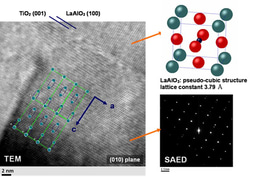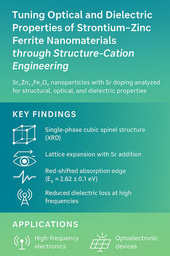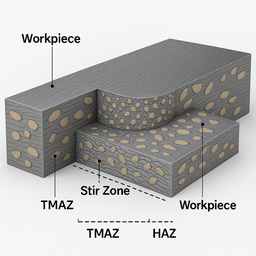
Seismologists have long struggled with a simple but vital question: can we tell, from the first few seconds of seismic wave recordings, whether an earthquake will stay small or grow into a disaster? A new study, “The deterministic behaviour of earthquake rupture beginning” by Valeria Longobardi, Simona Colombelli and Aldo Zollo, just published in Nature Communications Earth and Environment, shows that not all earthquakes born equal. From the first seconds of seismic signals, scientists can already get an idea of how large the earthquake will be — that is, its magnitude, which is used as a proxy for the amount of energy released within the Earth at the fracture zone where the rupture originates. When a seismic rupture begins, it may last only a few seconds and involve internal fracture surfaces of tens of kilometers length within the Earth’s crust – producing small, less damaging earthquakes. Or it may continue for hundreds of seconds, with the rupture propagating hundreds of kilometers – generating large, highly destructive earthquakes. Yet, the beginning of this fascinating and dangerous phenomenon remains a research topic of scientific debate.
The seismological community holds different views on whether, at the onset of an earthquake, information about its final size is already contained in the early signals emitted by the source. According to some studies (1,2), all earthquakes start in essentially the same way. In this indeterministic view, the final earthquake magnitude can only be determined once the rupture process has been completed. Other studies (3,4) suggest instead that the initial phase of the rupture carries intrinsic information about the final magnitude, implying that, in a probabilistic sense, the beginning of an earthquake "knows" its final development. The practical implications of these hypotheses are huge, since the deterministic model would consent to predict the earthquake size and its impact before the strongest shaking waves have reached cities and critical facilities and so activate safety emergency measure.
To unveil the physics of earthquake initiation, we analyzed a large catalog of global events, spanning a broad magnitude range (M 4 to M 9) (Figure 1a). We processed thousands of seismic waveforms recorded by accelerometers and velocity meters sensors. We computed P-wave log-displacement–time curves and examined the first seconds in detail, to measure the initial slope of each curve and correlated it with the earthquake’s final magnitude. The initial slope, expressed in units of frequency (1/s), quantifies the rate at which the initial P-wave displacement increases. We found that the initial growth rate of displacement—the slope of log-displacement curves—shows an inverse scaling with magnitude during the very early portion of the first seismic signals: on average, large earthquakes grow more slowly toward their final size, whereas small earthquakes release their energy much more rapidly. Remarkably, this behavior emerges within just the first second of the P-wave arrival.

Why does it matter?
Our results offer a new interpretation of seismic rupture physics. The observed decrease in the initial slope versus the earthquake magnitude can be explained in terms of the physical parameters that control the rupture itself. To corroborate this idea, we computed the duration-moment scaling produced by a circular rupture model (5) where a linear decreasing rupture velocity is assigned for an increasing moment magnitude in the range of Mw 4-8. We found that both the rupture velocity and/or dynamic stress drop control the rise of the radiated P pulse displacement and therefore its initial slope, supporting the idea that a decreasing value of rupture velocity with magnitude could be responsible for the observed decrease of the initial slope of P-wave displacement. Consistently, the time during which rupture accelerates to the dynamic propagation is well defined and observed to be related to the final slip (6). With this in mind, the scaling of times and slopes could be the footprint of the unstable acceleration phase – the breakout – of the seismic rupture and could enhance the idea that earthquakes are different already at the beginning of the rupture process (Figure 1b). More intuitively, longer times are needed to reach the transition from the breakout phase to the dynamic phase on a limited portion of the fault for larger events, thus implying a smaller rate of the displacement amplitude growth.
What are the future perspectives?
Rapid magnitude estimation has always been a central goal of earthquake early warning systems, which issue alerts before damaging waves reach vulnerable locations such as cities and critical infrastructure. The study findings suggest that since the final size of an earthquake is already encoded in the first instants of seismic waves, the growth rate of displacement could be measured to obtain a rapid magnitude estimation and predicting the earthquake potential damaging shaking – gaining precious seconds for life-saving mitigation measures.
References
- Meier, M.-A., Ampuero, J. P. & Heaton, T. H. The hidden simplicity of subduction megathrust earthquakes. Science (1979) 357, 1277–1281 (2017).
- Trugman, D. T., Page, M. T., Minson, S. E. & Cochran, E. S. Peak Ground Displacement Saturates Exactly When Expected: Implications for Earthquake Early Warning. J Geophys Res Solid Earth 124, 4642–4653 (2019).
- Colombelli, S., Festa, G. & Zollo, A. Early rupture signals predict the final earthquake size. Geophys J Int 223, 692–706 (2020).
- Melgar, D. & Hayes, G. P. Characterizing large earthquakes before rupture is complete. Sci Adv 5, (2019).
- SATO, T. & HIRASAWA, T. Body wave spectra from propagating shear cracks. Journal of Physics of the Earth 21, 415–431 (1973).
- Latour, S., Schubnel, A., Nielsen, S., Madariaga, R. & Vinciguerra, S. Characterization of nucleation during laboratory earthquakes. Geophys Res Lett 40, 5064–5069 (2013).
Follow the Topic
-
Communications Earth & Environment

An open access journal from Nature Portfolio that publishes high-quality research, reviews and commentary in the Earth, environmental and planetary sciences.
Related Collections
With Collections, you can get published faster and increase your visibility.
Geology of the Moon
Publishing Model: Hybrid
Deadline: Jan 31, 2026
Drought
Publishing Model: Hybrid
Deadline: Dec 31, 2025





Please sign in or register for FREE
If you are a registered user on Research Communities by Springer Nature, please sign in